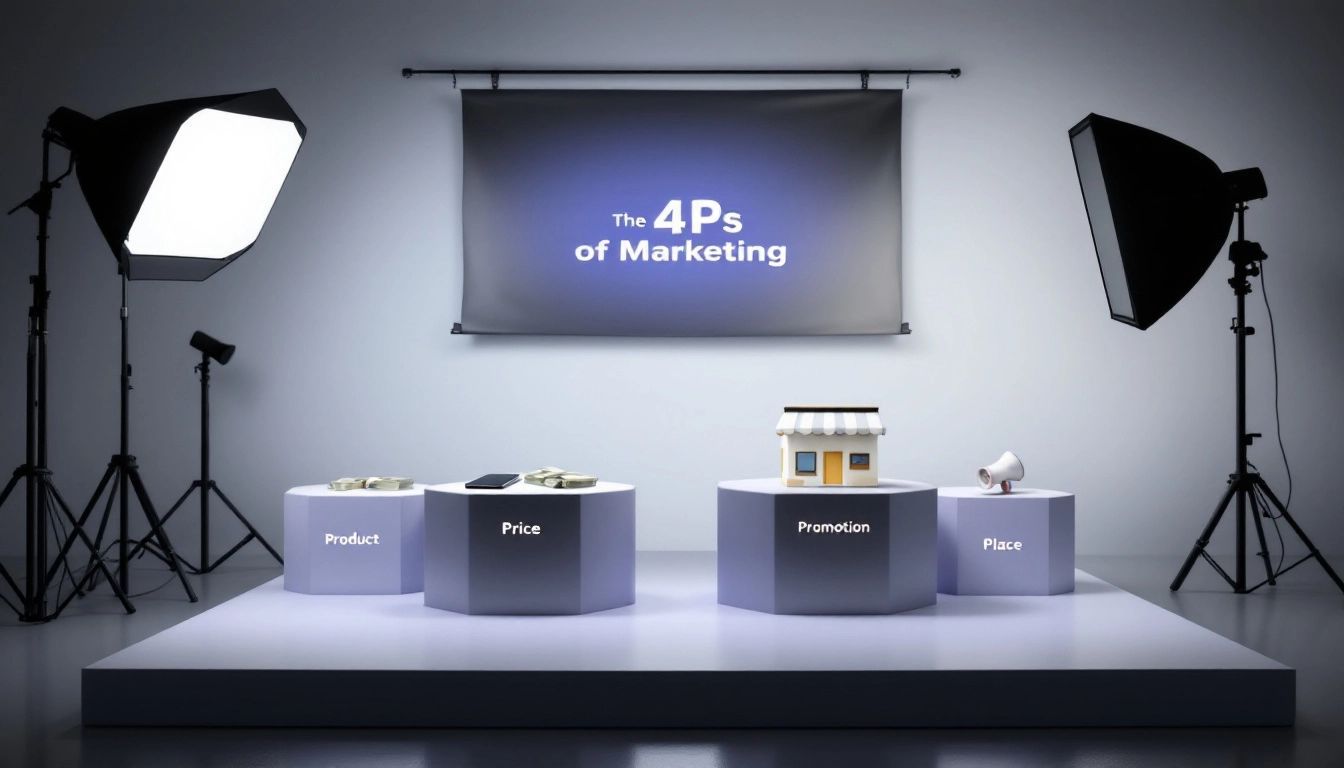Defining Your Marketing Strategy

A strong marketing strategy is essential for any successful business. It acts as a guide, helping you reach your target audience and achieve sustainable growth. Consider it the foundation for how you will engage customers, surpass competitors, and effectively communicate your brand's story.
Creating a successful marketing strategy presentation isn't about random ideas. It requires a focused approach that clearly defines your value proposition and how you will deliver it. Ask yourself crucial questions: What are you offering? Who are you offering it to? What are your goals?
For instance, imagine launching a new line of organic skincare products. Your marketing strategy presentation might focus on:
- Highlighting your Uniqueness: What makes your organic skincare stand out? Is it the ethically sourced ingredients, eco-friendly packaging, or a unique formula?
- Identifying your Target Market: Are you targeting eco-conscious consumers, those with sensitive skin, or a broader demographic interested in natural beauty?
- Defining your Objectives: Are you aiming to increase brand awareness, drive online sales, or expand into retail stores?
Clearly defining these elements creates a focused marketing strategy presentation, enabling you to craft targeted messages that resonate with the right people and select the most effective channels to reach them. Remember, a successful marketing strategy presentation emphasizes clarity, focus, and a deep understanding of your audience and goals.
Market Research and Analysis
A compelling marketing strategy presentation requires a strong foundation, which is where market research comes in. Before developing your presentation, you need a deep understanding of your industry, competitors, and current trends.
Thorough market research goes beyond data collection; it's about uncovering valuable insights. For example, are there any unmet needs in your market that your product or service could address? Imagine discovering that while many organic skincare brands target women, few specifically cater to men. That's a valuable insight that could shape your entire marketing approach.
Competitive analysis is equally important. You need to understand your competitors, their strengths and weaknesses, pricing strategies, and marketing channels. This information helps you identify opportunities to differentiate your brand and stand out in a crowded marketplace.
Investing in thorough market research and analysis will make your marketing strategy presentation data-driven and insightful, setting the stage for a truly impactful presentation.
Target Audience Identification
Before diving into your marketing strategy presentation for those organic skincare products, you need to know exactly who you're talking to. This requires understanding your ideal customers.
Consider this: a 25-year-old living in a bustling city likely has different skincare concerns and preferences than a 50-year-old in a rural area. Age, location, lifestyle, interests, and even values influence how your audience makes decisions.
Let's say your market research reveals a growing demand for vegan skincare among millennial and Gen Z consumers. This insight allows you to refine your target audience further – perhaps focusing on young, urban professionals concerned about both animal welfare and the environment. Your marketing strategy presentation becomes much more focused, allowing you to tailor your message and visuals to appeal directly to their interests.
Remember that identifying your target audience is an ongoing process of refining your understanding of their needs and how your brand can best serve them. This customer-centric approach strengthens your marketing strategy presentation.
## Unique Selling Proposition (USP)
Imagine a room full of organic skincare brands all vying for attention. What makes *your* brand stand out? That's your Unique Selling Proposition (USP), a cornerstone of any successful marketing strategy.
Your USP is more than just what you sell; it's the *why* behind your brand. It's the unique blend of benefits and values that resonate with your target audience and set you apart from competitors. Maybe your organic skincare line uses a rare, locally sourced ingredient, or perhaps your packaging is 100% biodegradable, appealing to eco-conscious consumers.
For example, TOMS Shoes built a globally recognized brand on the USP of giving back. For every pair of shoes purchased, TOMS donates a pair to a child in need. This simple but powerful USP resonated with consumers looking to make a difference with their purchases.
Clearly articulating your USP in your marketing strategy presentation is crucial. It becomes the foundation for your messaging, branding, and overall marketing efforts. When you can succinctly communicate why your brand is different and desirable, you create a lasting impression on your audience.
Marketing Mix (4Ps)

Now that you've defined your USP, it's time to refine your marketing mix – the tactical tools to bring your marketing strategy to life. This is the "how" that supports the "what" of your USP. The marketing mix, often referred to as the four Ps, includes:
Product: This goes beyond the physical product itself and encompasses the entire customer experience. In our organic skincare example, this means considering everything from the texture and scent of the product to the packaging and customer service. How does your product solve your target audience's problems? What needs are you fulfilling?
Price: Pricing requires finding a balance that aligns with your target audience's perceived value while remaining competitive. Research similar organic skincare brands. Are you positioning yourself as a premium, luxury brand, or a more accessible, everyday option? Your pricing should reflect this.
Place: Where will customers find your product? Will you sell primarily online, through e-commerce platforms? Or, are you looking to partner with boutique retailers or even launch your own branded stores? Your marketing strategy presentation should outline your distribution channels. For example, if you're targeting eco-conscious millennials, a strong online presence through platforms like Instagram and Pinterest is crucial.
Promotion: This involves actively promoting your brand and products. This could include social media marketing, content marketing, email campaigns, influencer partnerships, or even traditional advertising. For example, you might offer free samples of your organic skincare line at a local farmers' market to generate buzz and collect valuable customer feedback.
Carefully considering each element of the marketing mix and aligning it with your overall marketing strategy creates a powerful roadmap for reaching your target audience and achieving your business goals.
Speaking of working smarter, imagine crafting your next successful marketing strategy presentation with the power of AI. GenPPT helps you create professional, data-driven presentations quickly and efficiently. Learn more about GenPPT: The best AI presentation tool.
Budget Allocation
Allocating your marketing budget wisely is crucial for the success of your marketing strategy. All those tactics we discussed, like influencer collaborations and paid campaigns, require funding to succeed.
First, determine your overall marketing budget. Next, prioritize where those dollars will be most impactful. Should you invest heavily in social media advertising to boost your initial reach? Or allocate more to creating high-quality blog content that builds organic traffic over time?
There's no one-size-fits-all approach, but a good rule of thumb is to align your budget with your specific goals and target audience. For example, if you’re a new brand aiming for rapid growth, investing in paid advertising might be a significant part of your budget. However, if you're focused on building long-term brand loyalty, allocating more towards content marketing and community engagement might be more effective.
Measuring Success

You've put significant effort into your marketing strategy: researching your market, identifying your target audience, and crafting compelling messaging. But how do you determine its effectiveness? That's where measuring success comes in.
Key performance indicators (KPIs) are the metrics that are most important to your goals. Consider them the scorecard for your marketing efforts. Are you aiming to drive website traffic? Then metrics like unique visitors and page views will be crucial. If boosting brand awareness is your focus, track social media mentions, shares, and follower growth.
For instance, let's say your organic skincare brand launched a campaign promoting a new line of vegan products. You might track KPIs like:
- Website traffic from social media: How many people visited your product page after clicking on your Instagram post?
- Sales conversion rate: What percentage of website visitors actually purchased the new vegan products?
- Customer feedback: Are customers praising your new line on social media or leaving positive reviews?
Go beyond simply gathering data – analyze it. Identify trends, spot areas for improvement, and use those insights to refine your marketing strategy over time. A data-driven approach allows you to adapt, evolve, and ultimately, maximize your efforts.
